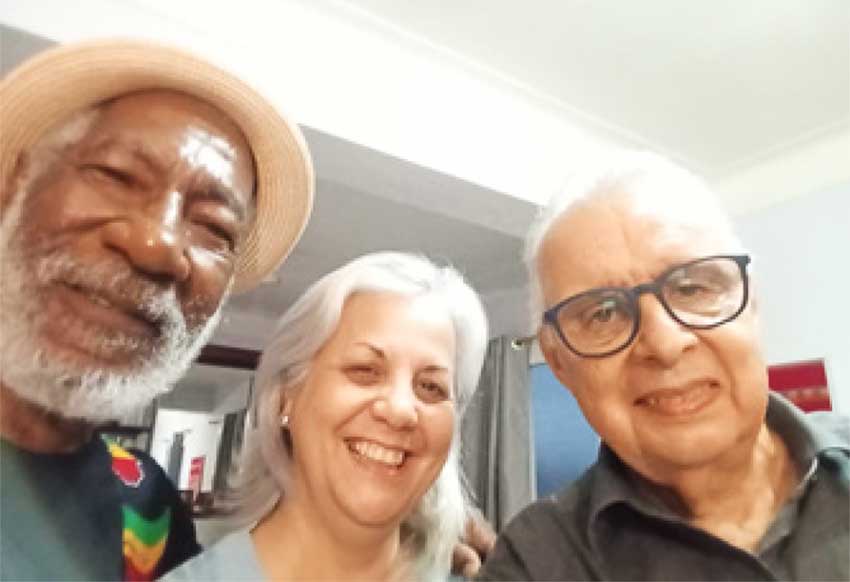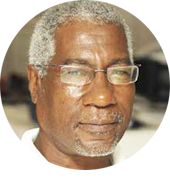

As rekindling old friendships go, my best of late was reconnecting with my lifelong journalist colleague, Jorge Luna Mendoza, who I’ve known since 1977.
That was one year after I landed my first job as Editor of Saint Lucia’s Crusader newspaper and a year before my first visit to Cuba, with four other Saint Lucians, for the XI World Festival of Youth and Students, from July 26 to August 5, 1978.
Luna was among the first Caribbean correspondents for Cuba’s national news agency Prensa Latina (PL), alongside the likes of Frank Gonzales and Godfrey Tchamlesso.
Then came the Grenada Revolution, where I worked with PL’s Arnaldo Hutchinson, Luna and I remained connected.
We separately covered the first armed revolution in the English-speaking Caribbean, me in Grenada and he from Havana, together riding the waves of transformational change in reporting that came with satellite TV, Internet, IT and now AI.
And then came 2024…
For months we’d been waxing warm ahead of a special PL event commemorating a 65-year-old operation to take Cuba’s truth to the world – and when we did meet, it was muck akin to old schoolmates reliving student days.
We’re both past what other professions call ‘retirement age’ and very young-spirited in our approaches to life, aging gracefully and content with who we are and from whence we cometh.
Luna is of Peruvian lineage, but a lifelong Cuban citizen and a true servant of the cause sparked by Jose Marti and inflamed by Fidel Castro and Che Guevara.
I wrote for PL and also did news broadcast to Haiti, through Radio Havana Cuba’s Creole Broadcast to Haiti, with producer Anna Kovac.
My stories appeared in the English edition of the ‘Granma’ newspaper and I was a correspondent for the glossy ‘Prisma’ news magazine.
PL has forever remained Luna’s flagship, him still daily hoisting its banner between home and base, writing without end.
Over 12 days in January, we daily strolled down Memory Lane in Havana, recalling times that proved our profession is never a bed-of-roses, but instead an unending series of bumpy passages through Time and History, in sorrow, fear and triumph.
He covered the election and overthrow of Chile’s President Salvador Allende, witnessed changes of military regimes in Bolivia, followed his native Peru forever and covered state visits by President Fidel Castro to Chile and Venezuela that added to his long and deservingly-cherished legacy.
Luna wrote a book on the Grenada revolution while the revolution was still unfolding, chronicling – from an international perspective – the new climate that came with revolutionary regime change under the leadership of Maurice Bishop and the New Jewel Movement (NJM).
‘Grenada – The New Jewel of the Caribbean’ was published in Havana in 1982, covering the first two years of the revolution.
It paints a broad canvas of the negative influences that propped-up the Eric Gairy dictatorship, including its links with Chilean dictator Augusto Pinochet dictatorship to and through the feared ‘Mongoose Gang’ that killed Bishop’s father Rupert.
It also covers the People’s Revolutionary Government’s (PRG) development of ties with the socialist community and developing nations, including members of the Non-Aligned Movement (NAM) and national liberation movements in Africa.
Luna chronicled the fruitful results of Grenada’s ties with Africa and Latin America, from Zimbabwe to Nicaragua, including the preeminent national project for constructing an international airport at Pointe Saline, with Cuba’s help, to facilitate growing trade and tourism.
The book reveals early external efforts, led by the US Central Intelligence Agency (CIA), to undermine the popular revolution that was deepening democracy at workplace and community levels, from districts to parliament, involving young and old, from cradle to grave.
Luna interviewed Prime Minister Maurice Bishop for that publication and had access to exclusive photos, including the map for the ground attack that changed power from a fascist dictatorship to an intended dictatorship of the working class.
The 350-Page book, with 50 exclusive photos, told the truth of what Luna saw and heard in Grenada from the revolution’s leaders and followers, soldiers and public servants, ruling-party supporters and ordinary citizens.
The book is still quite unique from a truth perspective, documenting with evidence what the entire US media had been led to believe was a Russian-backed Caribbean adventure led by Cuba, to mask the real objective of keeping the truth of the nearby English-speaking revolution, led by people of African descent, as far away from the USA as possible.
All that, except one thing: Luna’s prized book was never published in English.
A 42-year-old gap separates what he saw and wrote and what’s been written since; and four decades after the US-led invasion of October 25, 1983, volumes of varied accounts, mainly by analysts of yore, have speculated around and between facts and fiction, to try to tell ‘the true’ Grenada story.
But Luna’s accounts are based on names and places, dates, times and figures, grounded in who did what, where, when and why – and how.
We spoke much of the need for an English version of his Caribbean jewel, if only to add an important but absent perspective to an ongoing rear-view Grenada debate more focused on finding-out what went wrong and who to blame, instead of what was done right and why most of the Revolution’s good programmes still live on.
The fire that fed writers’ minds and fingers with pen-and-paper and typewriters back then still rages on inside the likes of Luna and I.
Watching him live and work from his home office (like me) and his dear wife (like mine did) respectfully respecting the sovereignty of his space in that bubble at his desk, I was glad our latest embraces were long and strong.
We share common codes of conduct on the battlefield for truth and honesty in reporting, verity verily running through our brains and veins, pens and fingers, every time we start chronicling life’s next story, or chapter.
This is who we are – birds of a feather!





